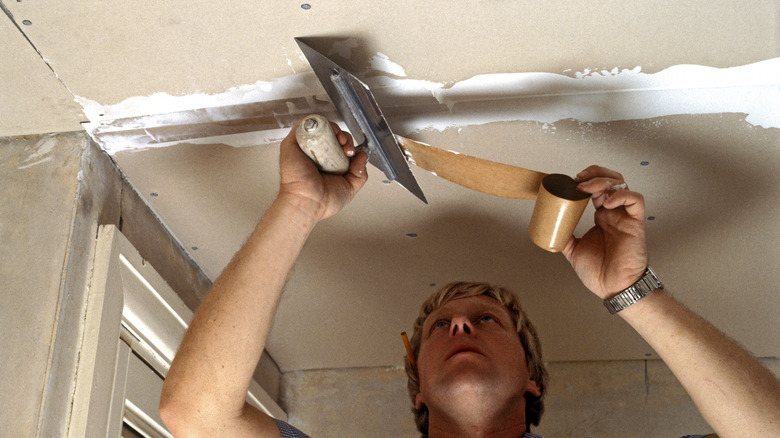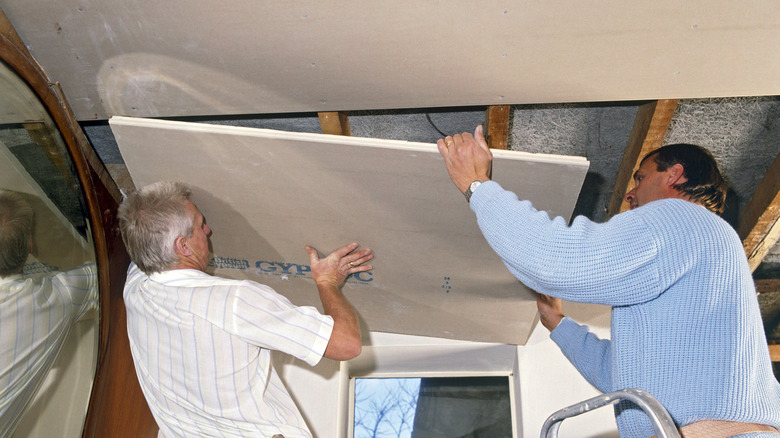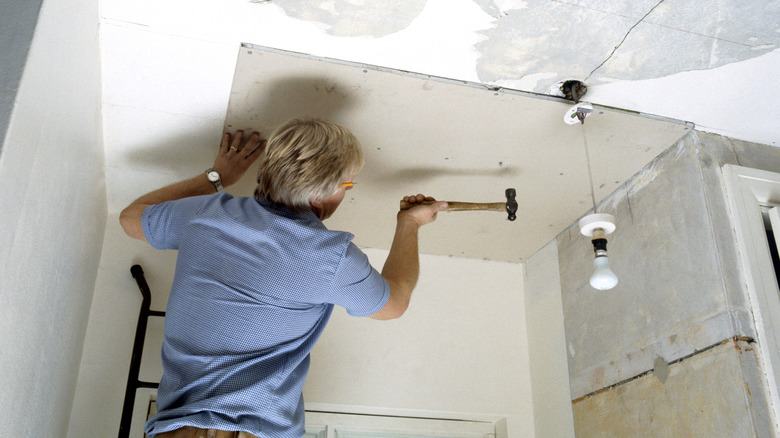The Easiest Way To Patch A Drywall Ceiling
Does your drywall ceiling need to be repaired? Small water leaks or simple wear and tear can cause discoloration or deterioration to the materials your ceiling is constructed from. Patching up drywall is one of those skills that is handy to have under your belt if you're a homeowner. According to Inch Calculator, hiring a professional to patch your drywall ceiling will cost an average of $500, which you can save if you learn how to do it yourself. However, hiring a professional might be in your best interest, especially for large-scale repairs. Moreover, high ceilings can sometimes be hard to reach and could potentially cause a dangerous situation.
If your ceiling repair job is on the smaller side, and you feel confident in being able to carry out the project yourself (or with help from a family member,) we've got you covered on everything you need to know for a fast and easy job.
How to patch a hole
According to Houseful of Handmade, there are a few items you will need before you can patch your ceiling, including a sheet of drywall big enough to repair the hole, drywall tape, and drywall mud. You should start by cutting the drywall to the correct size and securing it in place with drywall tape and drywall mud. Once it has dried, you can add more drywall mud for a smoother finish. After it has dried, you can sand the surface flat and add a fresh coat of paint to match the rest of your ceiling.
My Pro Painters explain that if your ceiling has suffered water damage, you need to make sure you carefully inspect it to see where the leak came from so you can make sure it doesn't happen again. Next, you should remove any damaged drywall and let the area dry out completely before starting on repairs — be sure to wear safety goggles and a face mask during this process so you can stay safe.
Do's and Don'ts
There are also a few general do's and don'ts regarding drywall patching. According to Simple Solutions, it is important to make sure you have the right tools for your repair job. They recommend a few handy tools such as sanding sponges, mud pans, a putty knife, joint compound, and drywall patch kits. They also note that it's important to make sure you don't accidentally damage any wiring or plumbing during the process.
Mark Sellman Painting also has another great tip, they recommend always running your hands over your patch to make sure it's smooth. Working with thin layers of mud coating and using your sanding sponge to sand your coatings after they are dry for a smooth result. Last but certainly not least, they note that wearing safety gear is also an important step that you must not skip, noting that inhaling drywall dust can be detrimental to your health.


